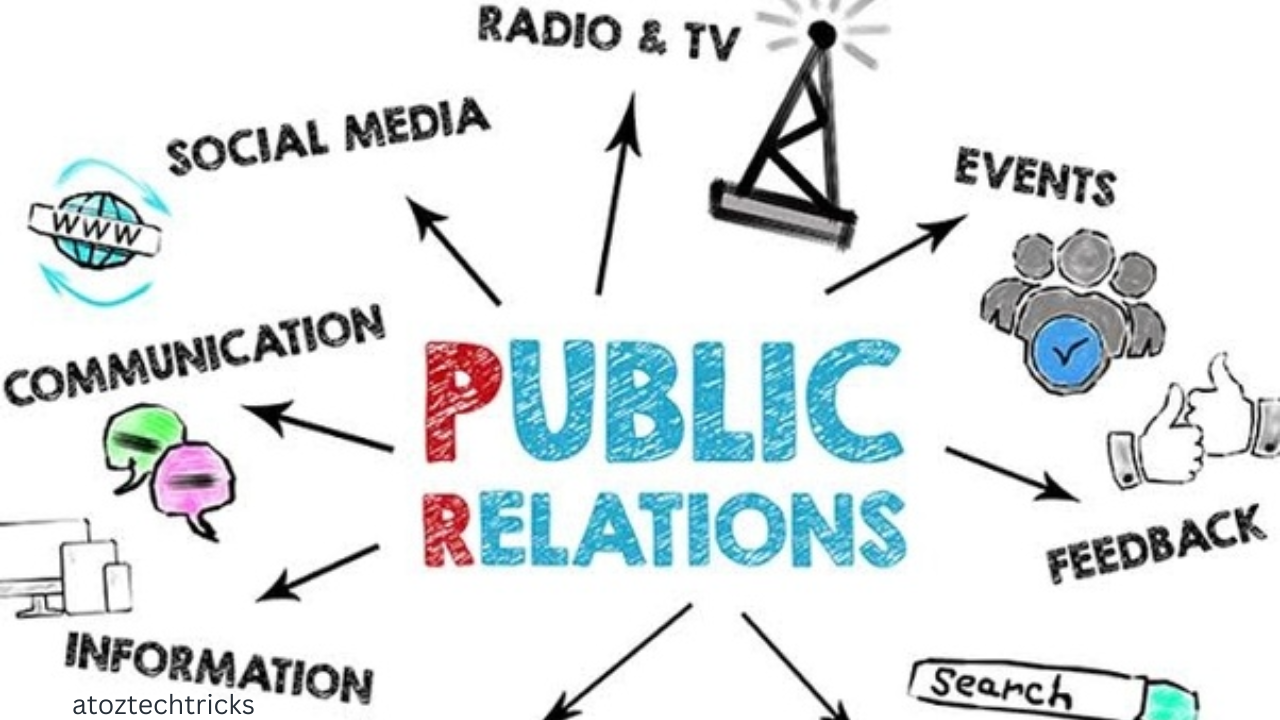Advertising and Public Relations Careers: A Comprehensive Guide
Advertising and public relations (PR) are dynamic fields that play crucial roles in shaping how organizations and individuals communicate with their audiences. Both professions are integral to brand management, consumer engagement, and strategic communication. This guide explores careers in advertising and PR, including job roles, required skills, career paths, and future trends.
1. Understanding Advertising and Public Relations
1.1 What is Advertising?
Advertising is the process of creating, delivering, and managing persuasive messages to promote products, services, or brands. The goal of advertising is to influence consumer behaviour, build brand awareness, and drive sales. Advertisers work across various media channels, including television, radio, print, digital, and social media, to reach target audiences effectively.
1.2 What is Public Relations?
Public relations involves managing and influencing an organization’s public image and reputation. PR professionals build and maintain positive relationships with the media, stakeholders, and the general public. They handle communication strategies, crisis management, and media relations to ensure that the organization is portrayed favourably.
Film and Television Production Careers: A Comprehensive Guide
2. Key Careers in Advertising
2.1 Advertising Account Manager
Role and Responsibilities: Advertising account managers act as the primary liaison between the agency and the client. They oversee the development and execution of advertising campaigns, ensuring that client objectives are met within budget and on schedule. Key responsibilities include managing client relationships, coordinating with creative teams, and analyzing campaign performance.
Skills Required:
- Strong communication and interpersonal skills
- Project management abilities
- Understanding of marketing and advertising strategies
- Budgeting and financial acumen
Career Path: Starting as an account executive, professionals can advance to account manager, senior account manager, and eventually to account director or agency partner.
2.2 Creative Director
Role and Responsibilities: Creative directors lead the development of creative concepts for advertising campaigns. They work closely with art directors, copywriters, and designers to create visually appealing and compelling ads. Their role involves overseeing the creative process, ensuring that the final output aligns with the client’s brand and objectives.
Skills Required:
- Exceptional creativity and artistic vision
- Leadership and team management skills
- Proficiency in design software and tools
- Strong understanding of branding and consumer psychology
Career Path: Creative directors often start as junior or senior designers or copywriters. They progress through roles such as art director or associate creative director before reaching the creative director position.
2.3 Media Planner
Role and Responsibilities: Media planners are responsible for strategizing and selecting the most effective media channels to reach target audiences. They analyze media trends, audience demographics, and campaign performance to allocate advertising budgets efficiently. Media planners work with media buyers to negotiate and purchase media space.
Skills Required:
- Analytical and research skills
- Knowledge of media buying and planning tools
- Understanding of market research and audience analysis
- Strong negotiation skills
Career Path: Media planners can advance to media buying roles, media director positions, and ultimately to senior management roles within the media department or agency.
2.4 Copywriter
Role and Responsibilities: Copywriters craft the textual content for advertisements, including headlines, taglines, and body copy. They work closely with creative teams to develop engaging and persuasive messages that resonate with target audiences. Copywriters must adapt their writing style to different media and brand voices.
Skills Required:
- Excellent writing and editing skills
- Creativity and attention to detail
- Ability to work under tight deadlines
- Understanding of marketing and advertising principles
Career Path: Copywriters often start as junior or assistant copywriters and progress to senior copywriter, associate creative director, and eventually creative director roles.

3. Key Careers in Public Relations
3.1 Public Relations Specialist
Role and Responsibilities: Public relations specialists manage and execute PR campaigns to enhance an organization’s image. They write press releases, coordinate media events, and handle media inquiries. Their role involves crafting messages that align with the organization’s goals and maintaining relationships with journalists and influencers.
Skills Required:
- Strong writing and communication skills
- Media relations experience
- Crisis management capabilities
- Ability to work in a fast-paced environment
Career Path: PR specialists can advance to senior PR roles, PR manager, and ultimately to director of communications or head of PR within an organization.
3.2 PR Manager
Role and Responsibilities: PR managers oversee the development and implementation of PR strategies and campaigns. They manage PR teams, coordinate with media outlets, and evaluate the effectiveness of PR efforts. PR managers also handle crisis communication and work closely with senior leadership to align PR activities with organizational objectives.
Skills Required:
- Leadership and team management skills
- Strategic thinking and planning
- Excellent writing and presentation skills
- Crisis management expertise
Career Path: PR managers often progress from roles such as PR specialist or coordinator. They can advance to senior PR manager, director of PR, and VP of communications roles.
Exploring Careers in Music and Performing Arts: A Comprehensive Guide
3.3 Media Relations Manager
Role and Responsibilities: Media relations managers focus on building and maintaining relationships with journalists and media outlets. They pitch stories, manage press releases, and coordinate media interviews. Their goal is to secure positive media coverage and enhance the organization’s public profile.
Skills Required:
- Strong media contacts and networking abilities
- Excellent communication and negotiation skills
- Understanding of media trends and news cycles
- Ability to manage multiple projects simultaneously
Career Path: Media relations managers typically start in entry-level PR roles and can advance to senior media relations manager, PR director, and executive positions.
3.4 Crisis Communications Specialist
Role and Responsibilities: Crisis communications specialists manage communication strategies during times of crisis or controversy. They develop and implement plans to address and mitigate negative publicity, protect the organization’s reputation, and communicate effectively with stakeholders.
Skills Required:
- Strong problem-solving and analytical skills
- Ability to remain calm under pressure
- Excellent writing and communication abilities
- Experience in crisis management and media relations
Career Path: Crisis communications specialists may start in general PR roles and specialize in crisis management. They can progress to senior crisis communications roles, PR director, and VP of communications.
4. Skills and Qualifications
4.1 Educational Background
A career in advertising or public relations typically requires a bachelor’s degree in fields such as communications, marketing, advertising, public relations, or journalism. Advanced degrees or certifications can enhance career prospects and opportunities for advancement.
4.2 Essential Skills
1. Communication Skills: Both advertising and PR professionals must excel in verbal and written communication to convey messages effectively and build relationships with clients, media, and audiences.
2. Creativity: In advertising, creativity is essential for developing compelling campaigns. In PR, creativity helps in crafting engaging stories and managing public perceptions.
3. Analytical Skills: The ability to analyze market trends, campaign performance, and audience insights is crucial for making informed decisions and optimizing strategies.
4. Project Management: Managing multiple projects, meeting deadlines, and coordinating with teams are key aspects of both advertising and PR roles.
5. Digital Literacy: Proficiency in digital tools, social media platforms, and analytics software is increasingly important in both fields for reaching and engaging audiences.
5. Career Path and Advancement
5.1 Entry-Level Positions
Starting positions in advertising and PR include roles such as account executive, PR assistant, or junior copywriter. These roles provide foundational experience and exposure to the industry.
5.2 Mid-Level Positions
With experience, professionals can advance to mid-level roles such as account manager, PR specialist, or senior copywriter. These positions involve greater responsibilities, including managing teams and overseeing projects.
5.3 Senior-Level Positions
Senior-level roles include creative director, PR manager, and media relations manager. These positions require extensive experience and leadership skills. Professionals in these roles shape strategic direction and manage large teams or accounts.
5.4 Executive Positions
At the executive level, roles such as VP of communications, chief marketing officer (CMO), or head of PR involve setting organizational strategy, overseeing large departments, and representing the organization at the highest levels.
Writing and Editing Careers: A Comprehensive Guide to Building a Successful Path
6. Trends and Future Outlook
6.1 Integration of Technology
The integration of technology and digital media is transforming both advertising and PR. Professionals must stay updated with the latest digital tools, social media trends, and data analytics to effectively reach and engage audiences.
6.2 Data-Driven Decision Making
The use of data and analytics is becoming increasingly important in both fields. Advertisers and PR professionals leverage data to measure campaign effectiveness, understand audience behaviour, and make informed decisions.
6.3 Emphasis on Authenticity
Consumers are demanding more transparency and authenticity from brands. Both advertising and PR professionals must focus on creating genuine and relatable content that resonates with audiences and builds trust.
6.4 Growing Importance of Social Media
Social media platforms are central to modern advertising and PR strategies. Professionals must adeptly manage social media channels, engage with audiences, and respond to feedback in real time.
6.5 Increased Focus on Diversity and Inclusion
Diversity and inclusion are becoming crucial aspects of advertising and PR. Organizations are prioritizing diverse representation in campaigns and communications, reflecting the growing awareness of social issues.

Careers in advertising and public relations offer exciting opportunities for creativity, strategic thinking, and impact. Whether crafting compelling advertisements, managing public perceptions, or navigating media relations, professionals in these fields play a vital role in shaping brand narratives and connecting with audiences. With a focus on technology, data-driven insights, and authenticity, the future of advertising and PR is poised for continued evolution and innovation.




Post Comment